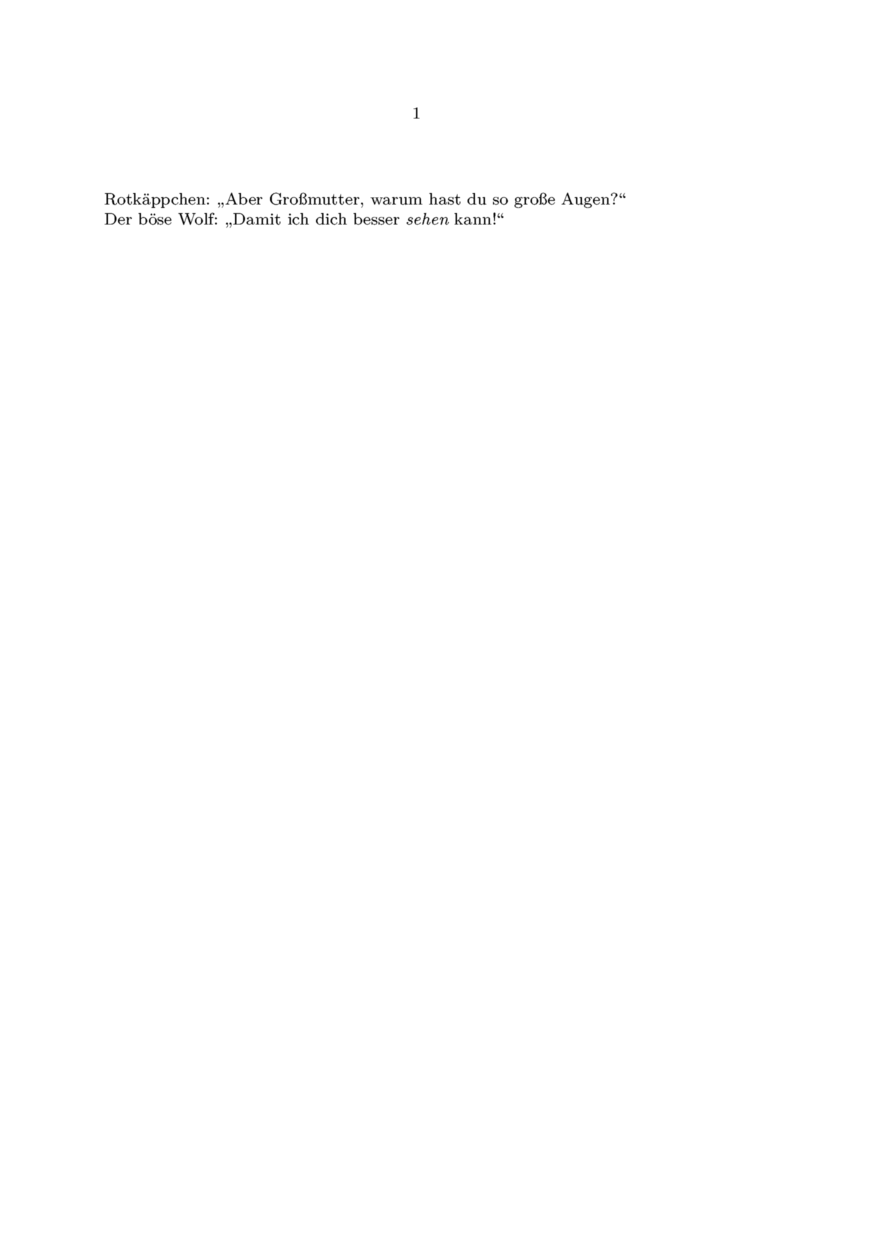Difference between revisions of "Second Step"
Jump to navigation
Jump to search
(fix regime name) |
({{Getting started navbox}}) |
||
| (One intermediate revision by one other user not shown) | |||
| Line 3: | Line 3: | ||
Here's a slightly more complex example: | Here's a slightly more complex example: | ||
| − | < | + | <context source="yes" text="looks like:"> |
| − | + | \enableregime [utf-8] % choose input encoding | |
| − | + | % (in LuaTeX and XeTeX, UTF-8 is on by default, thus not needed) | |
| − | |||
| − | |||
| − | |||
| − | |||
| − | |||
| − | |||
| − | |||
| − | |||
| − | |||
| − | |||
| − | |||
| − | |||
| − | |||
| − | looks like: | ||
| − | |||
| − | |||
| − | \enableregime [utf-8] % choose input encoding | ||
\mainlanguage [de] % language mode: changes typesetting rules, quote signs etc. | \mainlanguage [de] % language mode: changes typesetting rules, quote signs etc. | ||
\setupbodyfontenvironment[default][em=italic] % ConTeXt's default \em is slanted, but italic is better | \setupbodyfontenvironment[default][em=italic] % ConTeXt's default \em is slanted, but italic is better | ||
| Line 42: | Line 25: | ||
Now you can start with your own document, let's see what your [[Next Steps]] can be... | Now you can start with your own document, let's see what your [[Next Steps]] can be... | ||
| + | |||
| + | {{Getting started navbox}} | ||
Revision as of 11:05, 26 November 2012
< Main Page | First Document | Next Steps >
Here's a slightly more complex example:
\enableregime [utf-8] % choose input encoding % (in LuaTeX and XeTeX, UTF-8 is on by default, thus not needed) \mainlanguage [de] % language mode: changes typesetting rules, quote signs etc. \setupbodyfontenvironment[default][em=italic] % ConTeXt's default \em is slanted, but italic is better \starttext Rotkäppchen: \quotation{Aber Großmutter, warum hast du so große Augen?} Der böse Wolf: \quotation{Damit ich dich besser {\em sehen} kann!} \stoptext
looks like:

- regime is the input encoding, i.e. what you type, so that you can use accented characters (like umlauts in the example) directly. Old encodings are supported, but use UTF-8 whenever possible. In XeTeX and LuaTeX that's the default already, so you don't need that line any more. (More on that topic in Encodings and Regimes.)
- language is the language of your text. Besides \mainlanguage there's also \language to switch temporarily. Try your internet top level domain code as language code (de = german, fr = french, it = italian etc., see Language Codes).
- quotation: use logical markup instead of specified signs! You get single quotes with \quote. You can use \startquotation ... \stopquotation for longer (indented) quotes.
- em: again, logical markup! say "\emphasized" instead of bold or italics. Remember, it's a switch, not a command! (Not \em{foo}, but {\em foo}.)
Now you can start with your own document, let's see what your Next Steps can be...